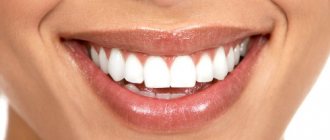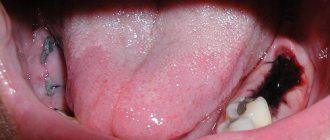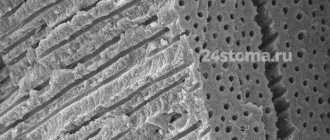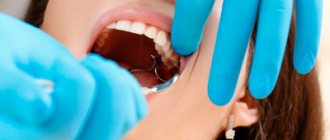Tooth extraction is a dental operation that is performed strictly for medical reasons. Reasons for tooth extraction may include severe traumatic tissue damage, incorrect position in the jaw, the formation of a large cyst, or advanced pulpitis.
Tooth extraction can be simple or complex. Even when the procedure is performed by an experienced dentist, negative consequences cannot be ruled out. One of the possible complications of the operation is inflammation of the periosteum, or periostitis.
Causes
Inflammation of the periosteum after tooth extraction can occur for various reasons. Here are some of them:
- violation of extraction technique,
- injury to bone tissue during dental procedures,
- penetration of infection into the wound,
- improper oral care after tooth extraction.
The likelihood of developing periostitis is higher if the patient has several carious teeth. Also at risk are people with chronic pharyngitis, otitis media, sinusitis, and immunodeficiency conditions.
How to help yourself before visiting a doctor
If the periosteum of the jaw is inflamed, you should forget about such traditional methods as heating: any hot compresses will aggravate the situation. If you open the formation, take antibiotics without a doctor’s prescription, or remove the pus yourself, this can lead to dire consequences.
You can alleviate your condition by doing the following:
- rinse your mouth with a weak saline solution at room temperature or an antiseptic with an analgesic effect;
- apply a cool compress to the cheek on the side of the inflammation;
- Take an over-the-counter pain reliever.
These measures will help relieve pain and slightly reduce swelling, but you should contact a specialist as soon as possible. As an antiseptic rinse, you can use ACTIVE mouthwash. It does not contain alcohol, so there is no risk of burning inflamed tissues, and the chlorhexidine and benzydamine in the composition will help relieve the condition before you see a doctor.
Clinical picture
The main signs of inflammation of the periosteum after tooth extraction include:
- hyperemia of gingival tissue,
- severe swelling of the gums in the area of the extracted tooth,
- throbbing pain that does not go away at rest and gets worse at night,
- temperature rise to 38 degrees and above,
- the formation of a soft convex formation under the mucosa,
- inflammation of nearby lymph nodes.
If you do not immediately seek help from a doctor, symptoms will quickly increase. Facial asymmetry appears, an abscess occurs with the formation of a fistula tract. The pathological process occurs individually in each patient and can last from several hours to two to three weeks.
Surgical removal of exostosis on the gums
The operation is performed by a dental surgeon. In many cases, local anesthesia is sufficient for pain relief. It is possible to use deep sedation or anesthesia, especially if there are many osteophytes and they are large.
Amputation of bone growths is carried out in stages:
- local or general anesthesia:
- antiseptic treatment of the oral cavity;
- gum incision to access the correction area;
- amputation of a lump with a chisel or laser;
- grinding with a drill until the bone is smooth;
- repeated antisepsis;
- suturing and bandaging.
The operation time depends on the clinical case. It can range from 40 minutes to 2 hours. When using local anesthesia, the patient can go home immediately after the bleeding stops.
Treatment methods
Treatment of inflammation of the periosteum after tooth extraction is carried out using different methods - conservative and surgical. The choice of tactics depends on the severity of symptoms and the general condition of the patient.
Drug support is prescribed at an early stage of the disease. It consists of taking antibiotics, anti-inflammatory drugs, antihistamines and painkillers.
To achieve optimal results, in most cases, drug therapy is combined with surgical treatment methods. Under anesthesia, the dentist opens the source of inflammation, ensures the outflow of purulent contents through drainage, and excises necrotic tissue.
Physiotherapy can normalize the condition of the damaged periosteum. UHF, laser therapy, electrophoresis, hydromassage and other techniques can speed up the regeneration of bone tissue and mucous membranes.
Symptoms of exostosis of the jaw
At the initial stages of development, the pathology usually goes unnoticed, as it manifests itself asymptomatically. It is often discovered when examining a patient for other dental diseases. The formation is clearly visible on an x-ray.
As the growths increase, characteristic symptoms appear. Their intensity depends on the clinical picture: location, shape, size.
By what signs can pathology be detected?
- the appearance of a tubercle or bump on the gums;
- sensation of a foreign object in the mouth, especially if the protrusion is located on the side of the tongue, at the bottom of the mouth;
- pain syndrome of varying intensity (occurs when injured by an acute growth of soft tissue);
- changes in the color of the mucous membranes in the area where the protrusion is located;
- jaw dysfunction if an osteophyte has formed near the jaw joint.
Unlike diseases of an infectious-inflammatory nature, it does not cause an increase in temperature, burning sensation, purulent abscesses, fistulas, and does not affect the tightness of the gums.
First aid at home: what can and cannot be done for periostitis
Let's take a closer look at what you can do and what will make your situation even worse.
What can and should be done
- consult a doctor: make an appointment as soon as possible, preferably urgently,
- carry out oral antiseptics: prepare a soda-saline solution based on warm water (a decoction of chamomile or sage, calendula or oak bark is also suitable) and rinse the mouth. This will help get rid of some of the pathogenic bacteria living in the mouth. Also, this measure will help to slightly relieve signs of inflammation and relieve pain,
- take an analgesic: it can be Nurofen, Ibuprofen, Nise. But if there are only a few hours left before the appointment (less than 4 hours), then it is better to refuse painkillers, because their effect may make you immune to the anesthetic that the doctor will administer,
- Apply a cold compress to the swollen cheek: do not forget to wrap it in a towel first so as not to cause necrosis of the soft tissues. Keep the cold for no more than 15-25 minutes,
- try not to chew on the side where the inflammation is localized.
What you should absolutely not do
- inflammation of the periosteum of the tooth cannot be treated only with traditional methods: such a serious disease as gumboil will not resolve with various lotions and herbal decoctions. All this will only slightly reduce the overall symptoms, but precious time without professional help will be lost,
- you can’t warm up the sore spot: you will only harm yourself by causing a rush of blood and widespread infection, especially if the inflammation is purulent,
- Do not use pressure bandages on the cheek or apply mechanical force,
- Do not take blood thinning medications, such as Aspirin,
- You should not self-prescribe antibiotics before consulting a dentist,
- you should not take powerful analgesics if there are several hours left before going to the doctor,
- Do not eat spicy, sour, hot or cold foods, which may cause additional irritation to the affected area.
Signs of the disease
If the tissue is damaged, acute pain occurs in the area of the affected tooth, the mucous membranes swell, and a white coating appears on the tongue. Other symptoms of the disease include:
- an increase in the size of the cervical lymph nodes;
- swelling of the cheek;
- increased body temperature;
- deterioration in physical well-being, weakness, decreased performance;
- decreased jaw mobility;
- separation of pus from the gums.
Pain during periosteum can radiate to the ear, chin, temple, and neck. If the disease occurs in a purulent form, after the abscess breaks through and the necrotic masses come out, the pain symptoms disappear almost immediately. But this does not mean that the inflammation has passed. It just went into a “calm” phase for a while. If a person continues to put off visiting the doctor, he may lose a tooth.
What does it lead to?
Many patients believe that atrophy is a completely harmless consequence of tooth loss. After all, visually this problem almost does not manifest itself at all. But that's not true. As the bone subsides, aesthetic defects in appearance arise and disturbances in the functioning of internal organs occur.
The most common consequences of decreased jaw bone volume are:
- change in appearance - an asymmetrical oval of the face appears, lips and cheeks seem to fall inward;
- a large number of wrinkles form in a short period of time;
- diction changes - the person becomes “lisp”;
- diseases of the gastrointestinal tract occur (this is due to poor quality of chewing food, swallowing large pieces);
- changes in bite, displacement of teeth adjacent to the atrophied area;
- impossibility of implantation without prior bone grafting.
What is periosteum
In everything you need to start small, so first let’s figure out what the periosteum of the tooth is. This is the soft connective tissue that covers the jawbone and also serves as the link that connects the tooth to all the surrounding muscles and ligaments. This tissue is permeated with blood vessels and nerve fibers; it is responsible for blood supply and also performs a protective function for bone.
Like all components of our body, the periosteum can be subject to various inflammatory processes. And the presence of these inflammatory processes in this area cannot and will not even be ignored for a long time (thanks to the striking symptoms).
So, if the periosteum is inflamed, this means that there is a disease in the oral cavity with an associated infection, which necessarily requires treatment.
On a note! You will be interested to know that dentists scientifically call inflammation of the periosteum “periostitis”, and ordinary people call it “flux”. This terminology greatly facilitates understanding among ordinary patients, and now you know what we are talking about.
How to avoid atrophy
It is much easier to avoid a problem than to look for ways to solve it later. The only way to prevent jaw atrophy is timely implantation. Under no circumstances should you walk around with an unsightly toothless smile for a long time.
If the bone begins to decrease due to periodontitis, severe thyroid disease, or hormonal imbalance, you should undergo proper treatment. At the same time, the patient needs to carefully monitor the health of his teeth and gums and unquestioningly follow all medical prescriptions.
A healthy and balanced diet is crucial in the prevention of atrophy. All people should eat fresh vegetables and fruits every day. While chewing them, the necessary load is created on the jaws, and the blood supply to the tooth roots increases.
What happens if you don't get treatment?
If you have inflammation of the periosteum of the tooth, and you do not want to carry out treatment and do not rush to see a doctor, then everything can be complicated by necrosis of the affected tissue and the spread of infection to neighboring organs: palate, throat, larynx, maxillary sinuses, ears, eyes, brain. Blood poisoning and sepsis may also occur, and large fistulas will appear. Some patients with complications cannot avoid osteomyelitis or phlegmon. And in most cases, you also have to say goodbye to the affected tooth, which could become the culprit for the spread of infection.
Such consequences require urgent surgical intervention, and without timely surgery, everything can end in death. Therefore, remember that the disease is not to be trifled with.
Understanding the classification of the disease
What is inflammation of the periosteum of the tooth, you now already know. Now we present to your attention the classification of periostitis.
| View | Peculiarities |
| According to the mechanism of occurrence |
|
| According to the nature of the flow |
|











